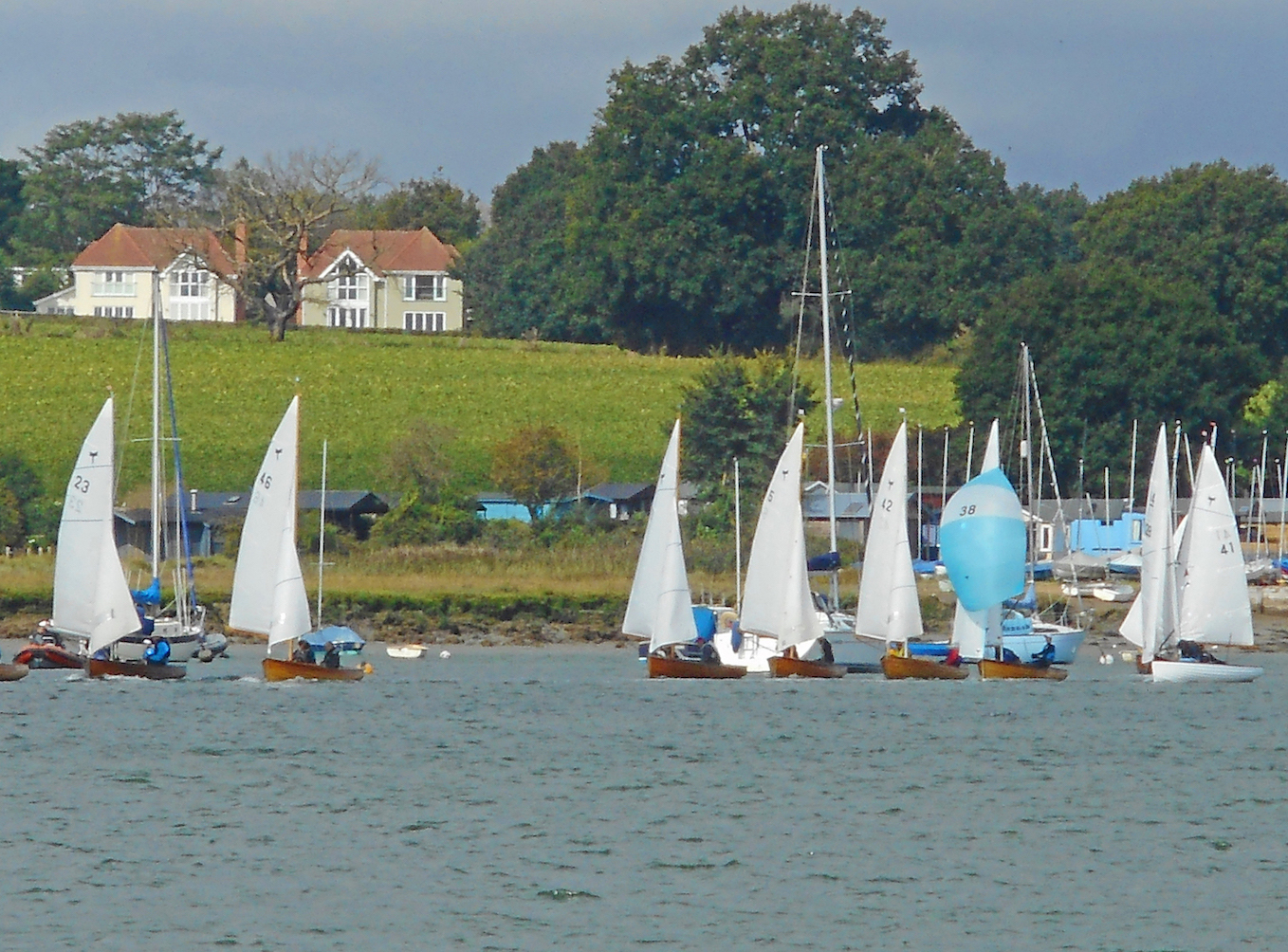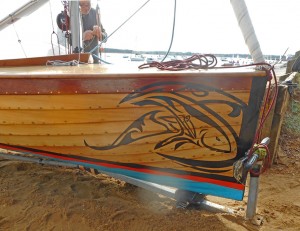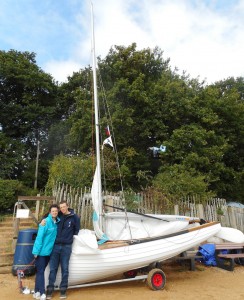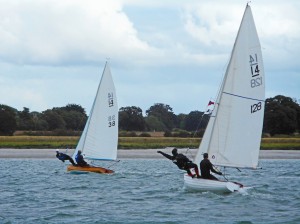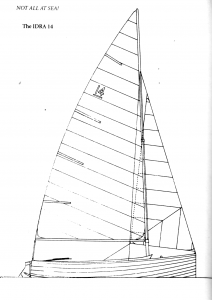Waldringfield Sailing Club, River Deben, Suffolk
By Julia Jones.
The weekend of September 5th-7th 2019 saw Waldringfield Sailing Club celebrating 70 years of its 14ft (4.3m) one- design ‘Dragonfly’ class (1949). And in a return match for when Waldringfield boats attended the Irish Dinghy Racing Association’s 70th celebrations at Clontarf in 2016, there were three Irish boats sailing in Suffolk this summer.
The immediate post-war years were a boom time for new dinghy classes as sailing clubs recovered from the absence of so many members. Materials were often scarce but part of the new 1940s ethos was parity and economy. It felt much better to establish one design classes where all members could compete on a level, rather than the pre-war development classes where those with the deepest pockets could afford to pay top designers to develop the best. Such classes remain to this day, but the explosion of interest in the later 1940s and early 1950s centred around standardised classes such as the professionally-built ‘Firefly’, ‘Flying Fifteen’, ‘Albacore’ and then the designs for dinghies that could be built by amateurs; the ‘Merlin’, ‘Cadet’, ‘Heron’ and ‘Enterprise’. (The ‘Mirror’ followed in the 1960s.) Many of these dinghies owed their popularity to their suitability for family sailing as well as racing. After the enforced separation of the war years, the nature of post war sailing changed from something that men and sporting young women enjoyed as an individual hobby to something that families might want to do together: race on Saturday, picnic on Sunday perhaps.
The Waldringfield Sailing Club began looking for a one-design dinghy late in 1947. Initially they were attracted by the North Norfolk 14 dinghy but then a member, Dr Palmer discovered the Fuss type. The original Fuss had been designed in 1939 by George O’Brien Kennedy for a member of the Parkstone Yacht Club at Poole in Dorset. According to O’Brien Kennedy, the dinghy’s name had been given in response to the antagonism caused by this early attempt to establish a relatively cheap class. Fuss was built as a practical day boat that would be easy for comparative beginners to enjoy while also being capable of good class racing. She proved she had speed as well as stability and was still looking modern in 1945 when the newly formed Irish Dinghy Racing Association (IDRA) contacted O’Brien Kennedy. He adapted the design to make a slightly stiffer and safe sea-boat for use in Dublin Bay. Cost was a prime factor, as was the availability (or not) of certain woods. The IDRA 14, as Fuss became, was adopted by a half dozen clubs, including three in Northern Ireland, and remains popular and competitive.
The first orders for the Waldringfield class were placed with two local Suffolk builders in 1948 and built over the winter of 1948-49 ready to be sailed during the following summer. Interestingly the design which had been estimated to cost £65 in Ireland (plus £10 for a suit of sails) would be delivered by the Suffolk yards for £150. The class name ‘Dragonfly’ was arrived at after extensive discussion. The distinctive emblem was then cut out by Mrs Palmer on the family’s billiard table. Approximately 40 Dragonflies were built over the following decade and into the early 1960s. As a 1950s child in Waldringfield I simply assumed they had been around for ever. The most recent Dragonfly, Phoenix was built by Dr Palmer’s son James in 2011.
When the IDRA 14 fleet celebrated its 70 birthday in 2016 James Palmer and a group of fellow Waldringfield Dragonfly enthusiasts took Phoenix to Clontarf for a weekend amongst their IDRA 14 cousins. Irish journalist WM Nixon, writing for Afloat, feared that the Dragonfly was destined to be out-classed, ‘as the Waldringfield class have adhered strictly to their original 1949 specification, including wooden spars and traditionally shaped sails, whereas the IDRA 14s have long since been into alloy spars with rigs as souped-up as can be.’ Finally however Nixon was able to report that Phoenix, thanks to skilful helming by James Palmer, came through the large fleet in the closing stages to finish 6th.
Three of the Irish dinghies came to Waldringfield to celebrate with the Dragonflies on their 70th anniversary and all brought something special. Wicked Sadie, built by Donal Heaney and a project team for the 2016 celebrations was a gorgeous sight in her rich variety of woods and with the eagle’s eye and the salmon of knowledge peering from her starboard bow. She was sailed by Donal Heaney with Adam Heffernan as crew. Ryan Kerns and Orla Dooge sailed Dr JP Frog, an IDRA 14 in white GRP but still a treat to watch. They managed to take one of the weekend’s races but otherwise IDRA 14 no 38 Starfish swept the board. Nixon describes her as a masterpiece. ‘With her combination of clear spruce planks and a beautiful mahogany sheerstrake, for appearance Starfish has become the definitive IDRA 14 by which other boats are rated.’ It’s not just looks: since her launch in 1962 Starfish has been class champion 20 times. In Waldringfield Starfish was sailed by her owner Alan Carr with talented 15 year old WSC Cadet sailor Ethan Hughes as crew.
Today, the Dragonfly, like so many mid-c20th clinker-built boats, tends to be needy. It’s good to report that the energetic and co-operative programme of restoration undertaken by Waldringfield Sailing Club members and Larkman’s boat yard in Woodbridge means that there are 13 still on the water and actively racing. There are 4 more left which are worth restoring but funds are needed to fettle them. A day spent relishing their classic lines, elegant varnish and exciting performance on the Deben convinced me that it would be a sad day indeed if they and their IDRA 14 sisters couldn’t continue to meet and celebrate each other’s birthdays far into the future.


